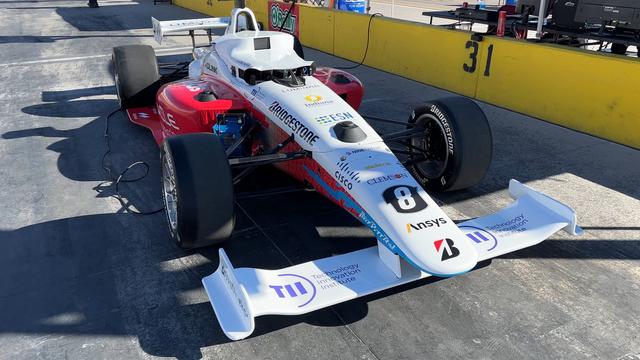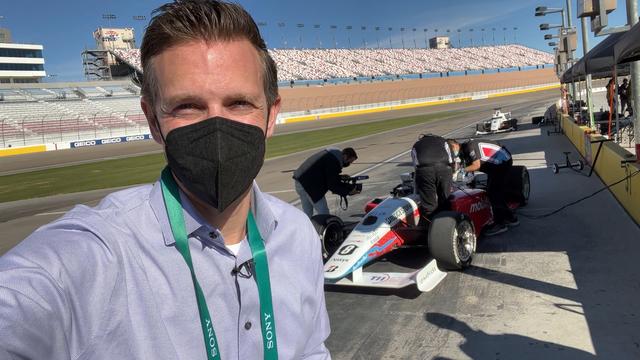
The Indy Autonomous Challenge is no ordinary race car race.
Recently, I attended the event at the Las Vegas Motor Speedway, which has teams from all over the world building and racing cars that drive themselves.
Follow Rich DeMuro on Instagram for more tech news, reviews and tips.
“We’re going to be running a first of its kind passing competition… so this is the first time in the world that two autonomous race cars will on the track at the same time passing each other at higher and higher speeds,” explained Paul Mitchell, Energy Systems Network CEO and organizer of the challenge.
Sadly, the stands were empty due to COVID concerns, but there was a small audience on hand to witness history being made at high speeds.
“These are not remote-controlled cars…this is not like a fancy RC car… this is fully autonomous … the car has to make all its decisions on its own… it’s really run by AI or artificial intelligence robot driver,” explained Mitchell.
Once the race is on, teams are allowed to adjust speed, but otherwise they can’t send instructions to the cars or control them. Most of the teams are from universities around the world.

“It’s about developing the software for these very high-performance race cars… and teach them to see… think and act that replicates as much as possible as we can the human race car driver’s performances,” said Gary Passon, with team AI Racing Tech.
In this year’s challenge, cars must pass each other all by themselves. And they did – at speeds of over 160 miles an hour.
“The nice thing about fully autonomous vehicles is that when we have a wreck no one is going to get hurt,” said Mitchell.
Watching the race as a human spectator, it’s hard to fathom that these cars are driving themselves without ongoing instruction. At one point, I was up close and personal with a racecar near the pit and wondered what would happen to me if the car just “took off” unexpectedly. It didn’t happen, but these cars literally have a mind of their own.
The action was in short bursts, with some technical difficulties along the way. At least one of the cars couldn’t race due to disqualification or another issue that kept it from competing.
But when the cars were actually going around the track, it felt like a real race, with the cars trying to overtake and even pass each other.
Still, as fun as it was, this competition isn’t about creating a robot Nascar. It’s all about pushing the limits of autonomous driving so everyone can benefit from additional safety, even at standard speeds.
“As you’re solving the problem of having these autonomous cars race at extremely high speeds it just makes it that much safer when this technology is applied back to the consumer market for self-driving cars for everyday commutes and ride sharing,” concluded Will Bryan with team Autonomous Tiger Racing.
A team named Polimove won the competition and set a new autonomous speed record for the event at 173 miles an hour. They took home a prize worth $150,000.
( function () {const contact_forms = document.getElementsByClassName('contact-form');for ( const form of contact_forms ) {form.onsubmit = function() {const buttons = form.getElementsByTagName('button');for( const button of buttons ) {button.setAttribute('disabled', true);}}}} )();document.getElementById( "ak_js_1" ).setAttribute( "value", ( new Date() ).getTime() );